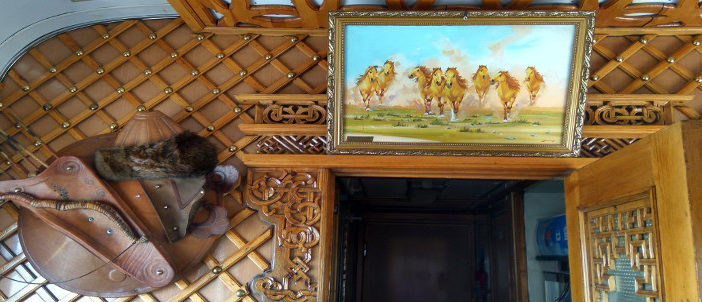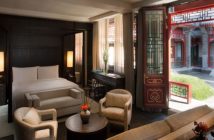(This summer Andrew Killeen traveled around Mongolia with his wife and two children: Noah, 10, and Joseph, 7. In this series of posts, he shares tips and tales from their adventures.)
It’s the 21st century, and flights from Beijing to Ulaanbaatar only take two and a half hours. Why on earth would anyone spend 28 hours going there on a train, as we did?
Well, for one thing it’s cheaper (though not by as much as you might think). More important however is the romance. I’ve written before about the excitement of traveling with children on a sleeper train. And this train goes on all the way to Moscow, on the tracks of the legendary Trans-Siberian express. It’s one of the world’s most celebrated railway journeys.
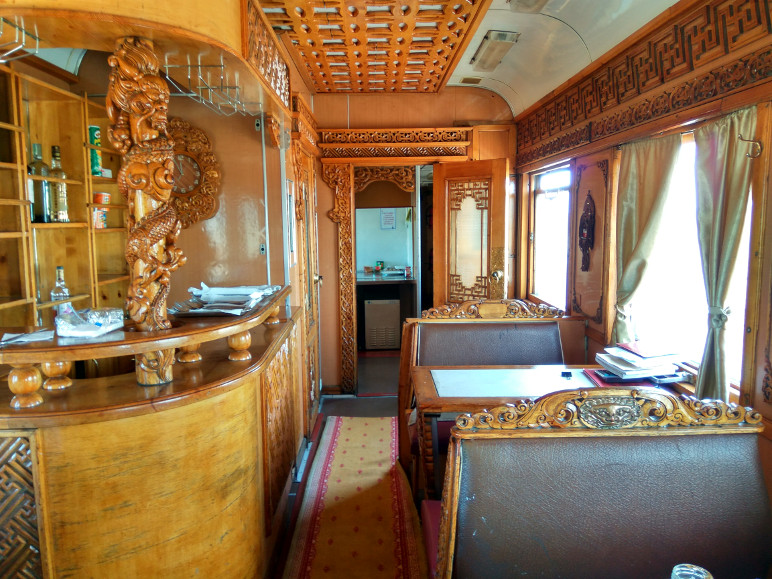
As with most train travel in China, tickets are released 60 days before the day of travel. However, you can’t buy international tickets from Beijing Railway Station and its handy English-speaking window 16. The ticket office you need is the China International Travel Service, hidden away in Beijing International Hotel. And you can’t use cards, you have to pay with cash. However service there is quick and courteous, and there’s an ATM in the hotel if you’ve forgotten to bring money with you.
Tickets cost around RMB 1500, depending on the class, and children travel cheaper. We opted for soft sleeper, but if I was doing it again I’d fork out the extra for luxury soft sleeper. Not only do you get an en suite shower, but (more importantly) a power socket, the need for which I will explain later. Hard sleeper is only recommended for the particularly money conscious, those inured to Chinese mattresses, and those without personal space issues.
Don’t forget you may also need visas. Holders of US passports don’t, for visits of up to 90 days, but most other nationalities do. They’re not expensive at USD 53, but have to be obtained in person at the Mongolian Embassy.
Trains depart from Beijing Railway Station. Shortly after departure staff will collect your tickets and replace them with a token, for no reason that I can discern, since the tickets are returned to you at the end of the journey. You’ll also get vouchers for meals – don’t make the mistake we made, of saving one for the next day! They’re for specific mealtimes only, and no use if you miss it. The dining car on the second day is Mongolian-run, and you’ll be given different vouchers for it.
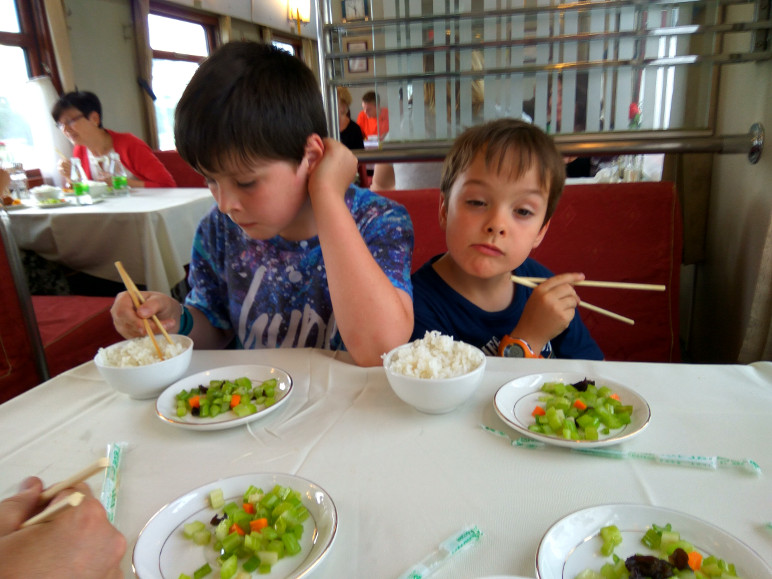
When traveling with kids, the great advantage of train travel over flying is the amount of space you have. A four person compartment is cosy for a family, and of course the kids can lie down and nap whenever they need. However, one downside is that you are on the train for a long time, including the time you spend asleep. We brought games, cards, and books, but by the end were all gathered around my laptop watching a movie. That’s why the power socket alone might justify spending the extra money for a luxury compartment.
When you arrive at the Mongolian border, at around 9pm, there’s a lengthy stop at Erlian, where you can stock up on supplies. The train then enters a shed. Mongolian rails are a different gauge to Chinese ones, so the “bogies” have to be changed, as well as the engine and dining car. At first this is dramatic and mysterious: the huge echoing space, the quiet of night interrupted by the thunderous clang of metal, the sudden jolts as carriages are coupled and uncoupled. It’s a lengthy process though, and after a while I gave up and went to bed.
Even then though your sleep will not go uninterrupted. Border guards will inspect your passports and visas, and will insist that children are woken up (although one of our children is a heavy sleeper, and when he didn’t respond to repeated shaking and calling they eventually took mercy and left him in peace.)
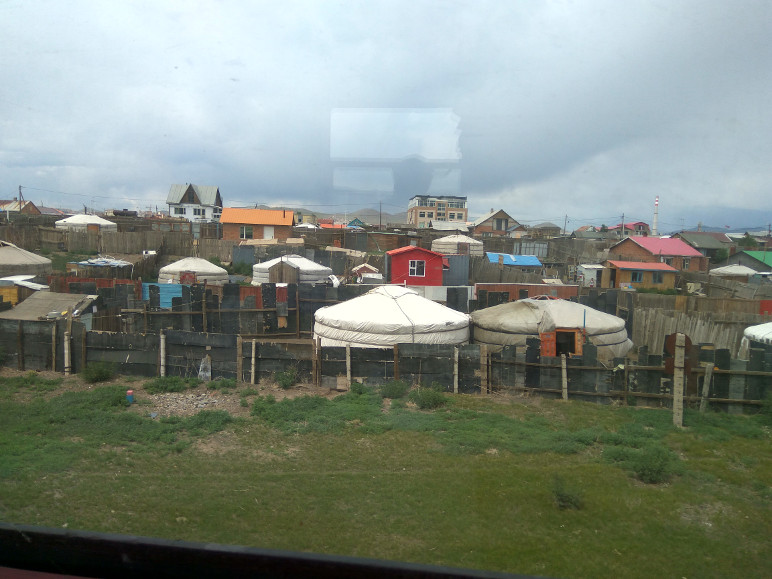
When morning finally dawns, you’ll be crossing the wide grasslands of Mongolia. It’s still several hours to your destination though, so don’t leave it too late to get to the dining car for your lunch. You’ll need all your strength when you arrive in Ulaanbaatar, which will be the subject of my next post.
Photos: Karen Killeen

